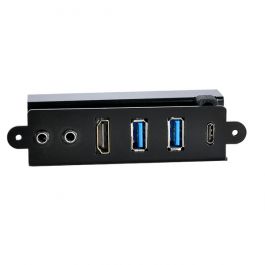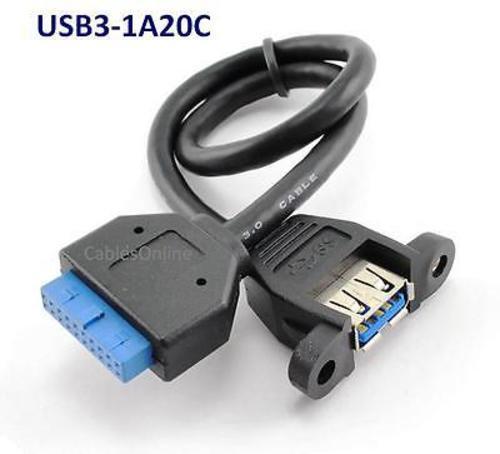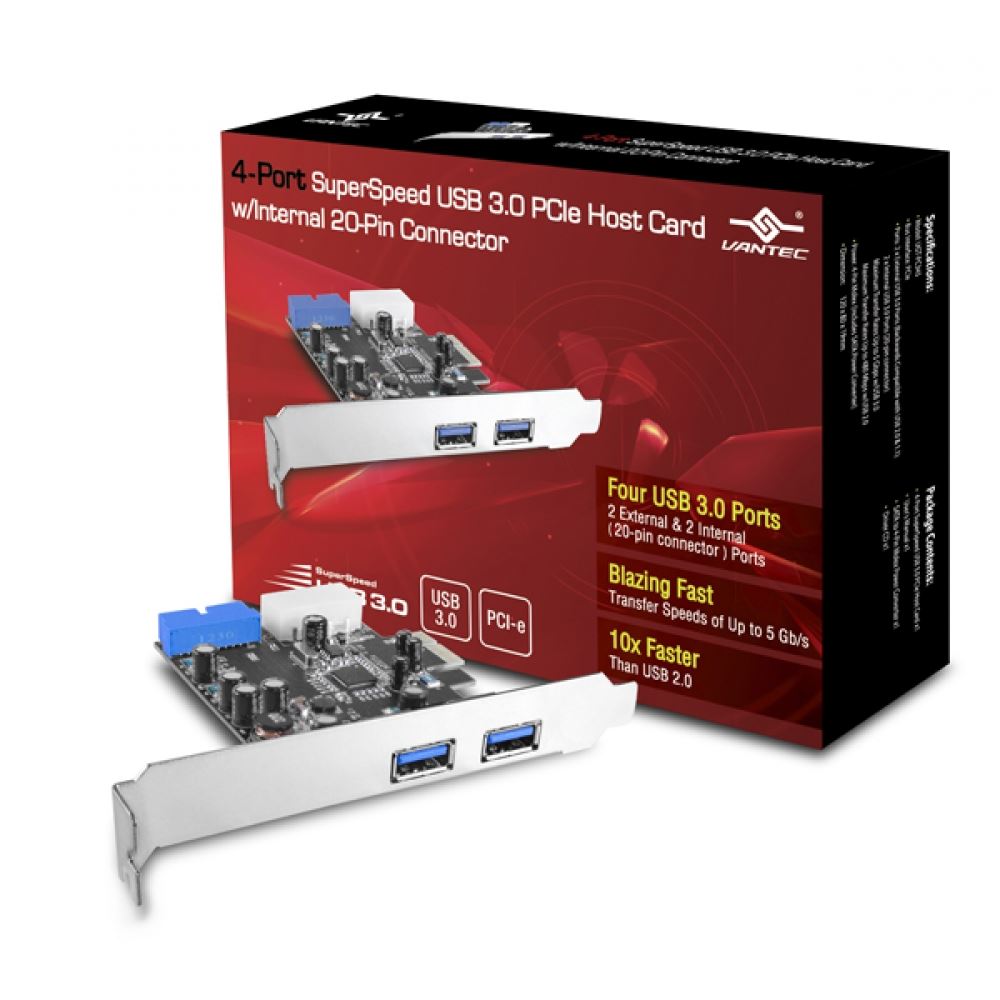Several things depend also on what mobo you have, and its headers. It may have (or not) headers for USB 2, USB 3.2 Gen 1 or Gen 2, or the new USB Type E for Gen 2 or Gen 2x2. Then, of course, whether you plan for what you have currently, or for possible updating to newer devices up to the Gen 2x2 specs.
Assuming you have and will want to use the full capabilities of a Gen 2x2 port from a Type E header, your best bet is to get a cable specifically for that, like this

www.newegg.com
Note that there are a few versions of this that vary in details of the plate that holds the socket, and how that can be mounted in your front panel. I would say virtually none of these can simply fit into the system built into your case's front ports, but MAYBE you could adapt. Alternatively, you'd need to cut a new hole in the case front and mount this. Note that this system allows ONE fully-capable Gen 2x2 port on the front, because that system devotes all of the capabilities of two 10 Gb/s channels to a single 20 Gb/s channel. Using this cable means you would get one Type C front port fully capable of the full speed of the mobo Type E header you have, be it Gen 2 or Gen 2x2.
There are two options limited to the Gen 2 (10 Gb/s) data rates similar to each other. Both of these I found are done as panels that install in a 5¼" optical drive bay on your case front, and carrying a selection of sockets. First type
has its USB 3.2 sockets as one Type C and two Type A. These all are fed from a single mobo Gen 1 or Gen 2 header. That header carries two ports, and it's not clear how they distribute those to three sockets. But I expect that IF your mobo header is capable of Gen 2 speeds, you can expect to achieve Gen 2 performance on the Type C socket, and possibly on a Type A socket. Note that this does NOT use the mobo Type E header. This panel also has two USB 2 sockets, fed by a single cable to a mobo USB 2 header (which provides 2 USB 2 ports) completely separate from the USB 3.2 system. It also has a cable to plug into your mobo's front panel audio header to provide headset earphone and mic 3.5 mm jacks. It adds an option with supplied cables to mount a SATA HDD or SSD under the circuit board. Other similar products may not include the audio ports and HDD mount. If you were to use this in addition to the dedicated single cable from the mobo Type E header (above), you might achieve one dedicated Type C port with max USB 3.2 speed (depends on mobo header speed) plus one type C and two Type A ports capable of Gen 2 speeds (fed from a mobo USB 3.2 Gen 2 header) and possibly a couple of USB 2 ports fed from their header type.
This is another type of device I found.
It is a USB 3.2 HUB. This one does use up your mobo Type E header, and then "shares" that among four USB 3.2 Gen 2 ports - three Type A, one Type C. So IF your mobo header Type E is capable of the Gen 2x2 (20 Gb/s) performance and you do NOT expect ever to have one device at that data rate, this Hub can allow two or more Gen 2 (10 Gb/s) devices to share that data rate channel on your front panel without using a mobo Gen1 or Gen 2 header. As a side issue, because it also requires a SATA power supply connection from your PSU for its Hub functions, it adds two QC3.0 Quick Charge ports (dedicated to charging only). If you were to use this type of system, you can get several USB 3.2 Gen 2 front ports that share whatever data rate your mobo Type E header has, but would not have that header available for other uses.
It is not clear to me whether the USB ports on the front of your case are limited to Gen1 (5 Gb/s) performance. They appear to be all Type A sockets, but one may be Type C. SOMETIMES those sockets are limited only by the capability of the mobo USB 3.2 Gen n header, and CAN provide Gen 2 performance (10 Gb/s) if the header can. But sometimes not. IF both your mobo headers and the case sockets can do the Gen 2 performance, then your interest may refocus on using any mobo Type E socket to use its max performance.








